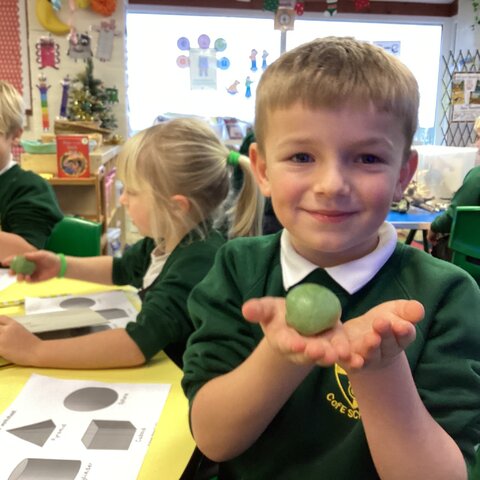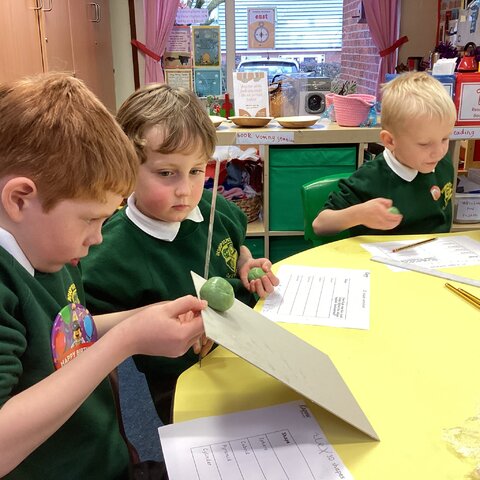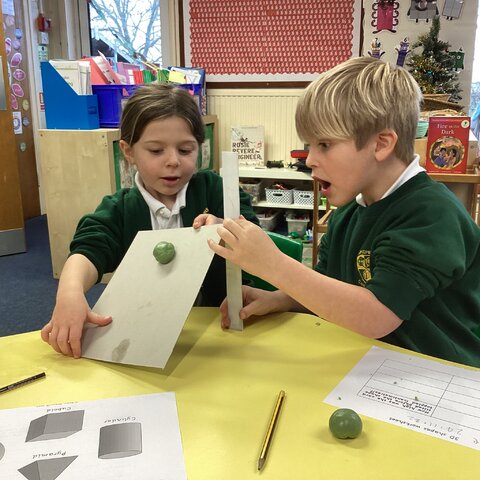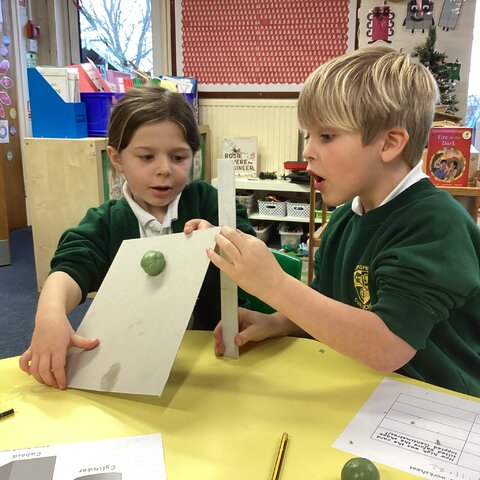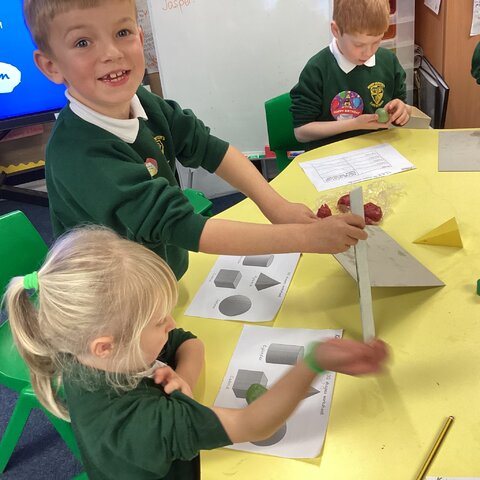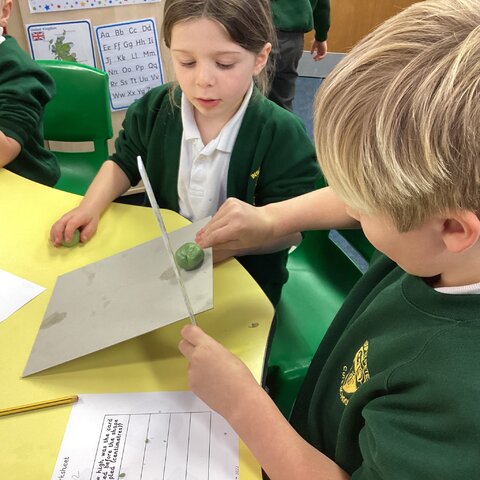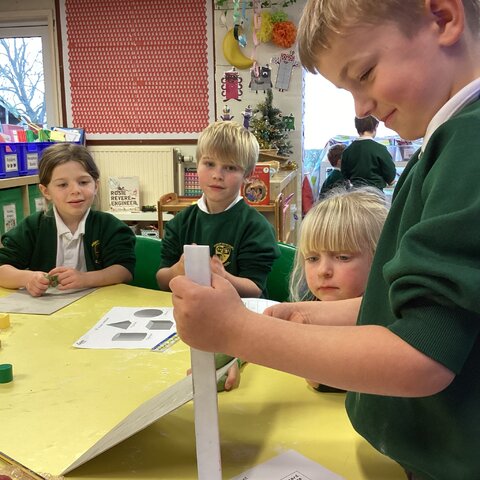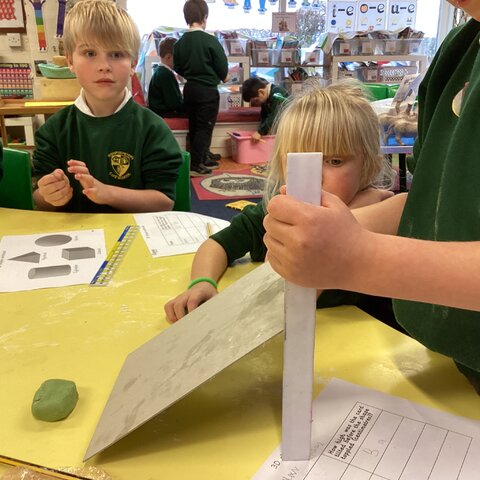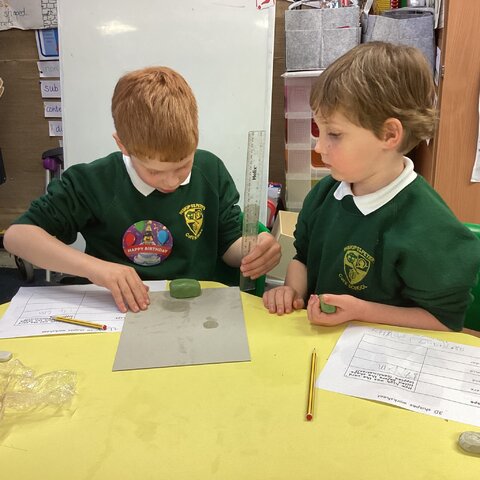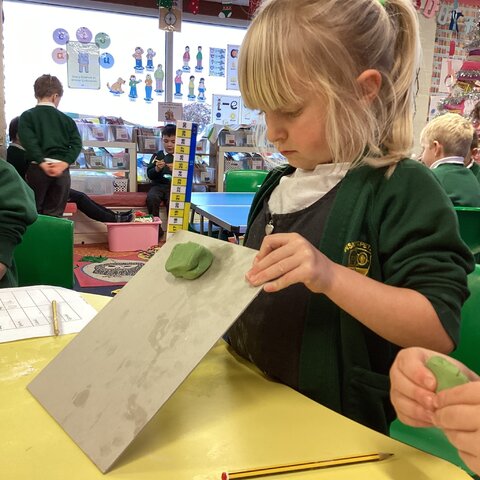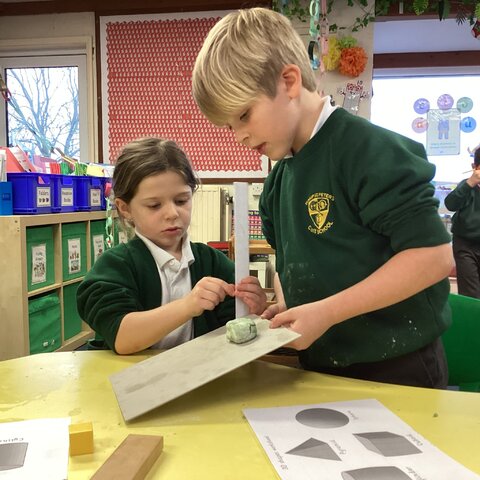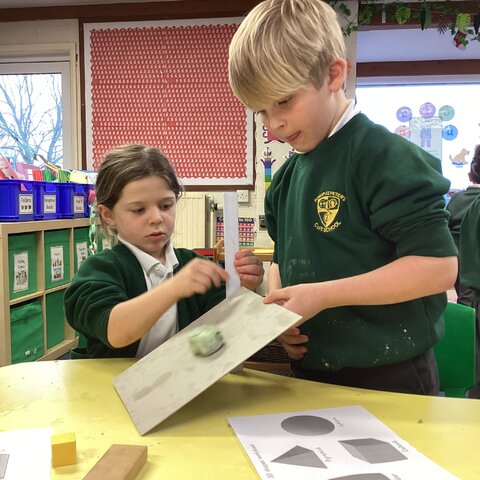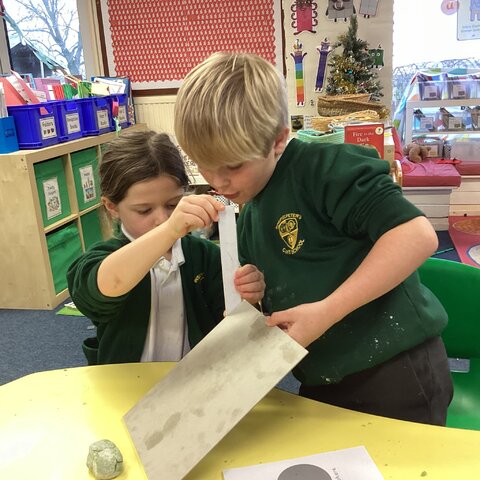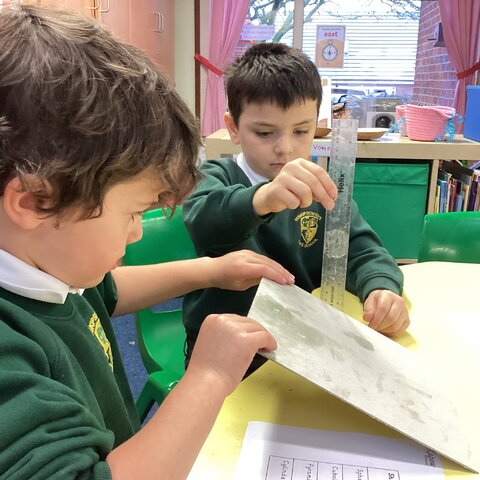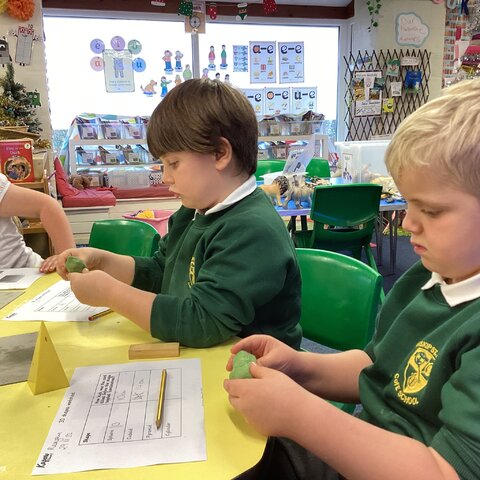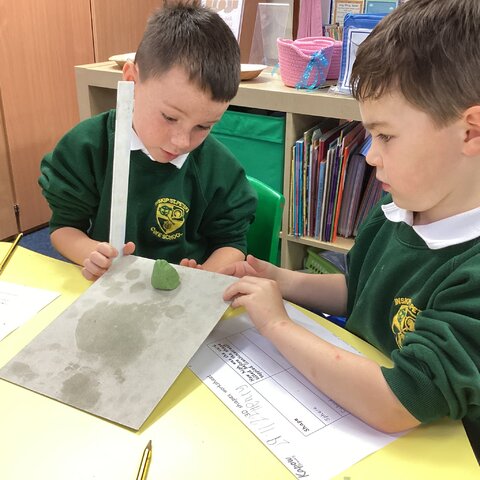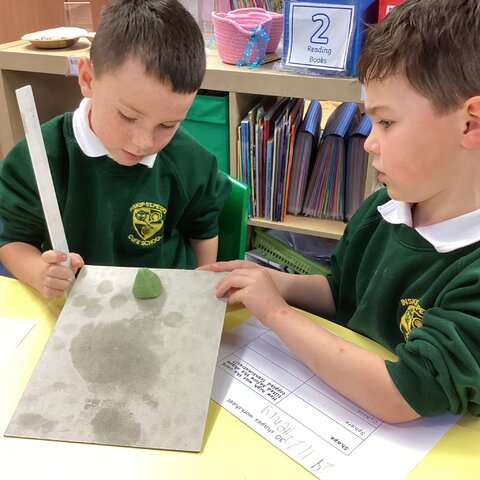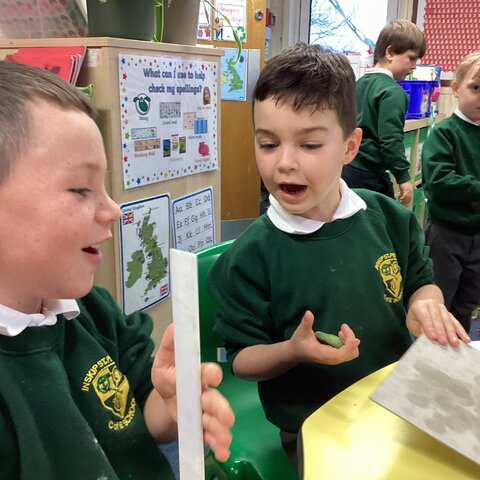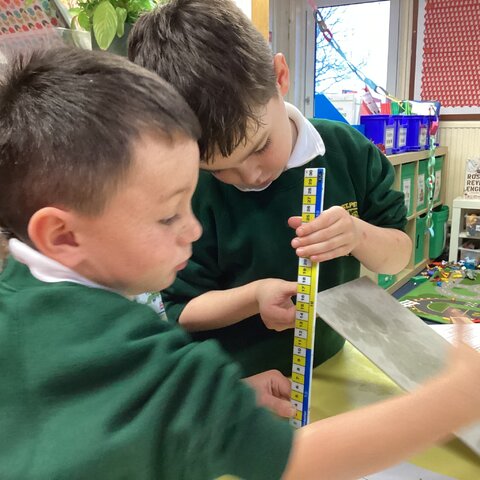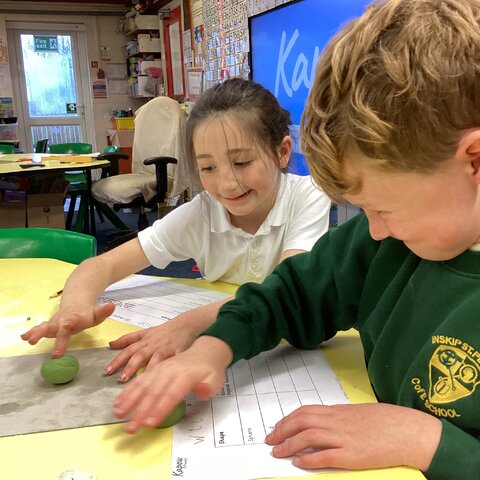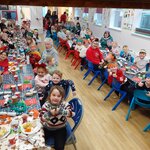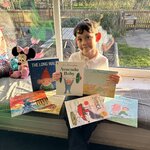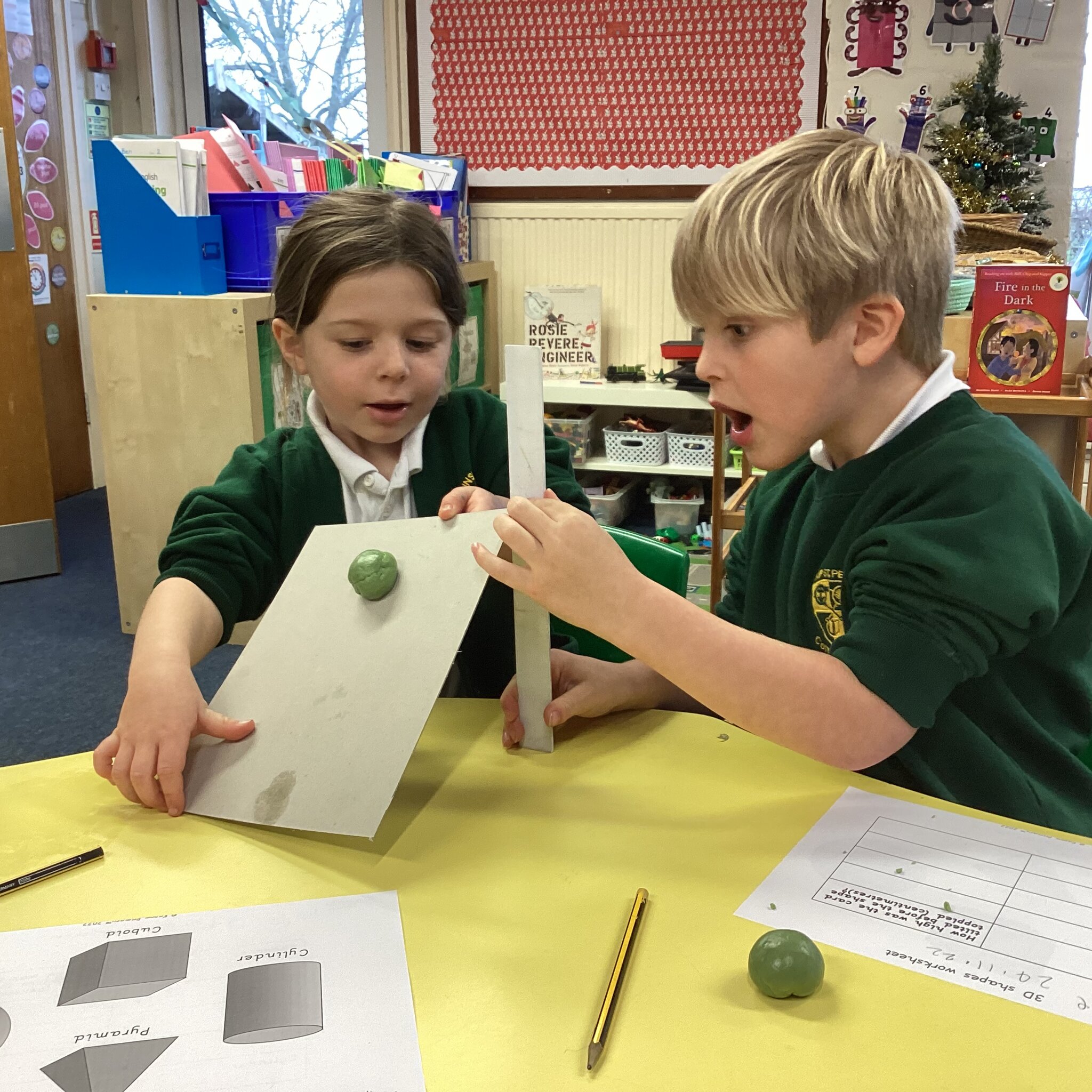
This week we began our design and technology project which is to design a chair for Baby Bear. We carried out an investigation to explore the stability of structures.
- Structure – something that has been formed or made from parts, for example, a large building, a bridge or a chair.
- Stable – when something is firmly fixed or not likely to change or move.
- Man-made – made by people.
- Natural – found in nature, for example, mountain, spider web.
We looked around the classroom and outside, to identify different man-made and natural structures of different scales:
- Man-made – buildings, chairs, tables, toys, buildings.
- Natural – snail shells, spider webs, ant nests, trees, bird nests.
The children then shared with the class the different functions of each structure. For example, the snail shell is for protection and the table is for working on.
The children worked with the same piece of Playdough for each shape so that the stability test was a fair test.
To measure the stability of each shape in turn they :
- Place the shape on one end of the card.
- Keeping the opposite end of the card on the table, slowly tilt upwards the end of the card with the shape on it.
- At some point, the shape will topple over and at this point, the children need to hold the tilted card steady and measure the distance between the table top and the top end of the tilted card.
- Record the findings in centimetres.
- Analyse the results by explaining that the lower the height of the card when the shape toppled, the lower the angle. The lower the angle at which the Playdough structure tips over, the less stable the shape is. If the shape stays standing when one end is tilted to 10cm, it is more stable than one that falls over at 5cm.
There are three key features to a stable free-standing structure:
- low height
- wide base
- flat base
The children found that the low-rise pyramid and cuboid are the most stable and the sphere and cylinder are the least stable.
Take a look at these photos to see the fun we had investigating …
.png)
